Content
- 1 Planting instructions
- 2 Growing instructions
- 3 Video
- 4 We select a place
- 5 Planting material
- 6 Getting started collecting
- 7 Disease protection
- 8 Stratification
- 9 Spring care
- 10 Autumn transplant
- 11 Weed control
- 12 What should you pay attention to?
- 13 Propagation by seedlings
- 14 Choosing a landing site
- 15 How to get a birch seedling?
- 16 Landing rules
Birch is the beauty of Russian forests and one of the symbols of Russia. If you want to see her in your summer cottage, then you need to know how to plant a birch correctly, what is the care for it and how to grow it? Then she will delight you with her magnificent appearance every day, because she lives for a very long time!
Planting instructions
Location on
A tall and slender birch tree can easily become a decoration for a garden or a backyard. It is undemanding to the soil, but needs a lot of moisture. It literally sucks out any amount of water in a radius of about 10 meters around the trunk. Therefore, before planting, you need to choose a place where decorative or agricultural crops do not grow.
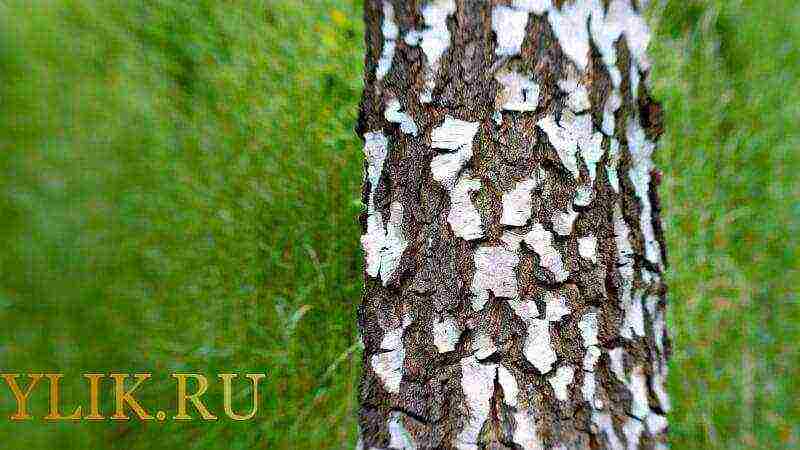
At first, a birch sprout seems small and fragile, but over time it turns into a tall, powerful tree, so you should choose the planting site wisely. A distance of 4 m from gas and water pipelines and building foundations should be observed. If there is not much space on the site, then you can choose one of the decorative types of birch. Among them there are low (7-8 m) trees that can coexist with other plants in a limited area. Of course, such trees do not grow in our forests, and seedlings will need to be bought from nurseries.
Wood from the forest
If you can afford to plant a full-fledged birch in the country, then the easiest way will be to grow it from the forest. In this case, the most important step will be to find a small seedling. Inexperienced gardeners who want to quickly grow a tree often plant fairly mature seedlings, 1-1.5 m tall. But in most cases, such a tree does not live for a long time in your country house.
The fact is that at this age the plant already has a rather extensive root system. To transplant it painlessly, you need to dig out the plant along with a lump of soil with a volume of about 1 square meter. m, which is an impossible task.

Going in search of a seedling, you need to look for the smallest plants. A good choice would be a tree 50-60 cm high, but ideally it is better to find a very young one, about 20 cm in height, because it is easiest to grow it. When digging, it is necessary to retreat from the trunk by 30-40 cm and, if possible, save as much soil as possible (at least 10 liters). It is also recommended to mark the location of the tree relative to the cardinal points, and plant it on the site in the same way.
The planting site should be well lit, but in the first few days, it is better to shade the sprout a little. It is also necessary to immediately water the plant abundantly, and if the first few days after planting are hot, then watering must be continued. When planting, do not forget that in a few years it will be a massive tree with a wide crown. Consider whether it will disturb your neighbors by shading their area or sucking water and minerals from the soil. It is better to immediately assess the situation, how much territory your tree needs in order to avoid conflicts in the future and grow it correctly, the plant lives for a very long time.
Planting from seeds
A more time-consuming but reliable way to grow birch is to plant seeds.They can be bought or collected in the fall. To understand that the seeds are ripe, you can run your hand over the earring. If from this they begin to crumble, then you can collect several earrings and tie them into a "broom". After that, the earrings dry out within 7 days and you can shake out the seeds from them.
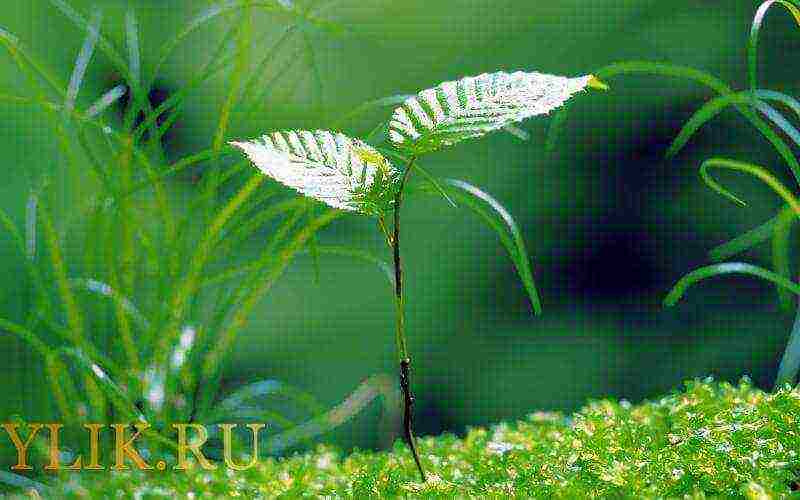
It is advisable to plant the seeds in the same autumn when they were harvested. Before planting, it is recommended to treat them with an antifungal agent, and clear the soil of any weeds. In the first days after planting, it is necessary to regularly water the seeds, and in winter, cover the planting site with snow.
Growing instructions
How to grow from a branch
You can even start growing this tree in your apartment. To do this, you can use its branch. Growing birch by cuttings is more difficult than most other trees, but if the care is correct, then it is quite possible.
The first step is to cut the branches correctly. It is necessary to do this in the morning, or on a cloudy day, so that the cut stalk retains enough moisture. It is better to choose a tree that lives for 2-3 years. The length of the branch should be within 5-10 cm. We make an incision obliquely to increase the area of contact with water. The upper part should also be cut, but already perpendicular to the branch, to reduce moisture evaporation.
The cut branches must be placed in a container with a little water and covered with a slightly damp cloth. You can also treat the lower part of the cutting with Kornevin for better root growth. When roots appear on the branch, you can transplant it into the ground. Until autumn, the birch should be watered regularly and protected from direct sunlight. How many months will the seedling get stronger? In 3-4 months, if the care was correct, the seedling will fully grow stronger and be ready for planting in open ground.
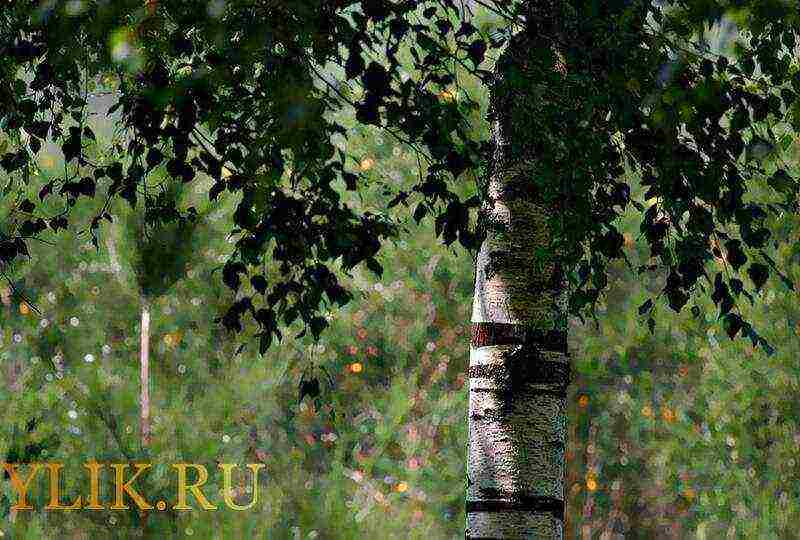
Growing at home
It is easier to transplant a seedling properly grown from a cutting into the ground than a seedling dug out in the forest. In this case, you will definitely not damage the root system and the probability of the tree's survival will significantly increase. How much to water it you ask? After planting, it is necessary to water the seedling for 3-4 days. Birch is a rather frost-resistant tree, it lives for a long time, so even a short autumn is enough for it to strengthen for the winter and no matter how much frost there is in winter, it will survive everything.
Starting next spring, you can start the annual preventive care of the birch. It is not much different from caring for other plants.
Watering
An adult birch is very water-consuming (a few trees can even drain a swamp). Therefore, on hot days it needs to be watered at the rate of 1 bucket per square meter. meter of crown.
Loosening the soil
Many weeds will not grow under the birch, as most of them will lack moisture. For decorative purposes, loosening can be carried out to combat small herbaceous plants. But it is not recommended to go deeper than 3 cm, because the birch root system is located very close to the surface.
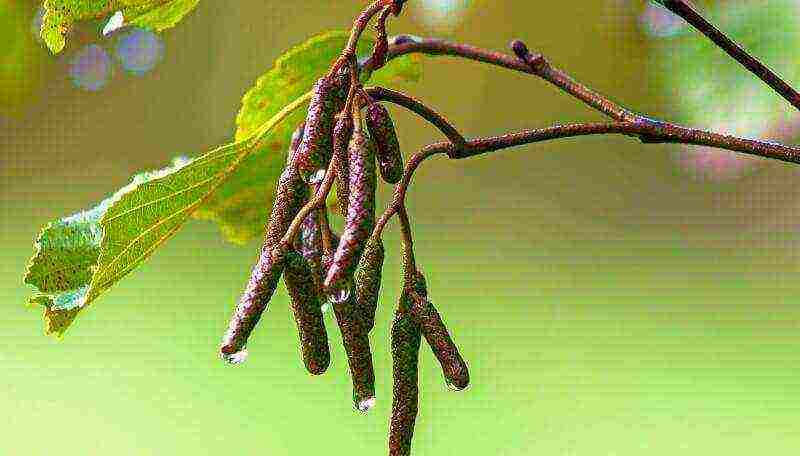
Pest control
Pests and diseases cannot cause critical damage to the tree, but they can spoil its appearance. How many times to do prophylaxis? For prevention, it is necessary to treat the crown and trunk with fungicides and insecticides once a year, and the tree lives peacefully without pests.
Pruning
To give the crown an attractive appearance, you can trim excess branches. But this must be done in early spring, before the juices begin to move. If you correctly plant and properly care for a birch, then it lives for more than 100 years and how many wonderful days it will bring you! Therefore, she will delight with her beauty and the quiet rustle of leaves not only you, but also your children and grandchildren, the main thing is to grow it correctly!
Video
Article rating:
(5 votes, average: 4.60 out of 5)
White birch, so dear, Russian, tender. Many people want its branches to rustle overhead, bringing a pleasant coolness.This means that the idea often arises to plant this tree yourself. To do this, you should adhere to some simple rules, and the white-trunked beauty will soon delight you with its rapid growth. Unlike conifers, you don't have to wait a decade. Very soon the tree will be large enough to provide shade on a hot afternoon. And even after cutting a few brooms for the winter, do not damage its luxurious crown. Initially, you need birch seeds or young seedlings. Both of these options are not costly or time consuming.
We select a place
It must be remembered that birch is very fond of water. A tree can pull almost 20 buckets from the soil in a day. It takes root well in poor areas, salt licks, black soil, sands and loams. But it is best to choose areas in which mainly slightly acidic and loose soil, loamy and always well moisturized.
Therefore, choose a place, and if the soil is not too suitable, then you should prepare a planting hole, that is, add a mixture of sand, peat, humus and garden soil to it. In the spring, you will need one glass of complex fertilizer. But before planting, you need to take care of collecting birch seeds. This can be done in early fall.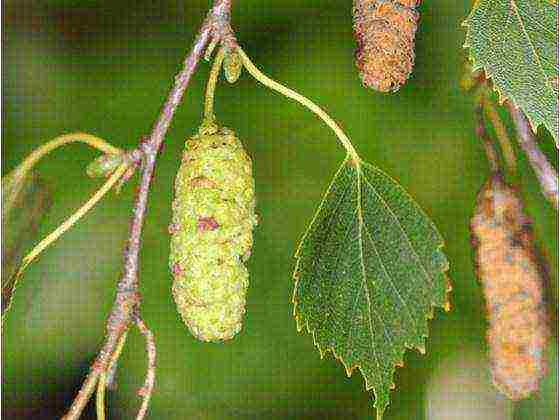
Planting material
You have all seen that birch produces delicate earrings in spring. Gradually seeds ripen in them, they turn brown, brown. By the fall, they are preparing to fly and search for a place to grow. The ear ring opens, and winged birch seeds scatter around the area. If you want to test their maturity, then a simple experiment is enough. Pull off the earring and rub it in your hand. If birch seeds are easily separated from one another, then they are completely ready.
Getting started collecting
Closer to autumn, it is necessary to periodically check the seed. The finished earrings are collected and tied in a bundle. Now they can be hung in a dark place protected from the wind for further ripening. After about a week, you can spread a clean cloth and gently shake the seeds over the sheet. They need to be sorted out from the branches and left for another week.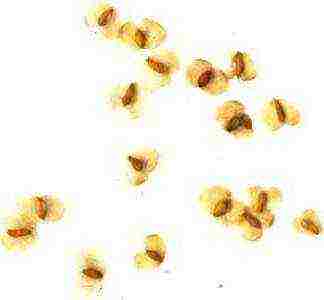
Disease protection
A birch tree grows from seeds at home quite easily, but care must be taken to ensure that the planting is not killed by a fungus or other disease. Therefore, before placing them in the soil, they must be pickled. For this purpose, potassium permanganate or hydrogen peroxide is used. The seeds are placed in a 1% solution for 20 minutes. Then they are washed and dried. There are special industrial preparations that help protect plantings from fungi and viruses, strengthen the immunity of future plants and give the sprout all the necessary nutrients.
Stratification
Before planting, the seeds must be cold treated. To do this, you can keep them for 3-4 weeks in the refrigerator, and then dry them at room temperature. It is recommended to sow them in frozen soil in early winter or early spring. The seeds are placed directly on the surface, not buried, but only covered with a board. From above they can be pressed with small branches and watered. As soon as the first shoots appear, be sure to remove the cover. The spread of birch seeds also occurs independently, so do not be surprised if a young sprout suddenly appears on your site at the beginning of summer. If it interferes, then in the fall you can carefully transplant to a more suitable place.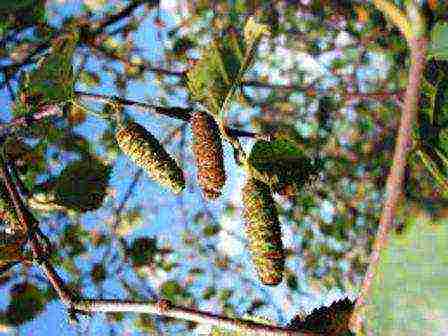
Spring care
In the first days after germination, birch is very vulnerable. A young sprout is no larger than a match. At this point, you need to organize abundant watering with a spray bottle. The frequency should be such that the top of the soil does not dry out. The roots are now only 10 cm deep and may die. This watering must be maintained until mid-August. By the end of the season, they reach a size of 20-30 cm.
Autumn transplant
Birch seeds, photos of which are given in the article, can turn into young seedlings in just one season. Providing good conditions and care, of course. In September-October, the largest seedlings must be transferred to a permanent place. The rest for the winter move to a nursery, that is, specially prepared and fertilized places for further development. Now, even rows are formed from chaotic plantings. Each of them must be at least 10 cm apart. By the fall of next year, the height of each of them will reach 80 cm. Now they can safely move to a permanent place of growth.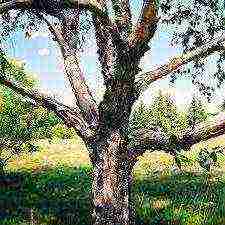
Weed control
When growing, you need to pay special attention to this. Of course, for an adult tree, herbs are not an obstacle, but a young plant can drown out or become a source of disease. Among the abundance of weeds, a young tree can be overlooked and damaged when weeding. For prevention, it will need to be treated with fungicides and insecticides at any stage of growth. It is imperative to carry out pruning. To do this, starting from the second year, in early spring, you need to outline the shape of the crown and carefully correct it.
What should you pay attention to?
Since it is not difficult to grow birch from seeds, beginners can get carried away with this activity. But you need to remember that birch has a depressing effect on most neighbors. These include trees, shrubs and other garden plantings. Firstly, white-borers draw a lot of water and microelements from the soil. Secondly, the substances contained in the fallen leaves of birch have a negative effect on most plants. Only spruce and rose hips live well next to them. Birches grow especially well in sunny areas.
Propagation by seedlings
If you do not have a long time in stock, and you want to plant a birch tree this season, then you can change your tactics. In this case, you need to go to the forest, or rather, to a birch grove. It is best to organize a hike for a young seedling in early spring, when the leaves have not yet blossomed. It is necessary to find a young, strong sprout, up to 100 cm in size. It should not have twisted branches or traces of the disease. Such a plant will easily take root and quickly start growing.
9,989 views
Updated 2 years ago
101 Likes
4 dislikes

Birch is a beautiful tree, so many people want to have it in the garden. Most people think that they need constant care, so they abandon their dreams, but knowing how to grow a birch, you can fulfill your desire and admire the tree every day. To grow a birch from a branch on your site, you need to choose a suitable shoot, put it in the water and wait until the root system is formed, then it should be planted in the ground. From time to time, you need to water and do not forget about feeding, otherwise the plant will die and you will have to start all over again.
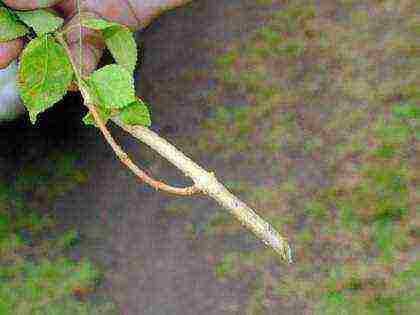
Choosing a twig. To grow a birch, it is recommended that you choose a suitable twig. The stalk should be young, but already sufficiently developed. You should take a pruner and cut it off at a 30-degree angle. The length of the branch should be up to 30 cm. The cutting should be taken from a young, healthy plant, then the future tree will be less exposed to various diseases. You need to cut the branch in the spring, when the buds are slightly swollen. In winter, this should not be done, since it will be impossible to plant a seedling in the soil, it will simply freeze. In summer and autumn, this is also not recommended.
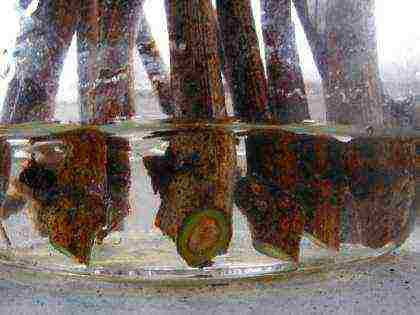
Formation of the root system. To grow a birch tree from a branch, you need to put it in a glass of water and cover with damp gauze to form a root system. It is recommended to change the fluid every 3 days. This can take about a month. To make the process go faster, gardeners recommend treating the lower part of the cuttings with Kornevin. In this case, the roots will grow much faster. After 2 weeks, the cutting will be ready for planting.It may also happen that the root system does not form, so it is better to cut off a few branches and put them in a glass of water.
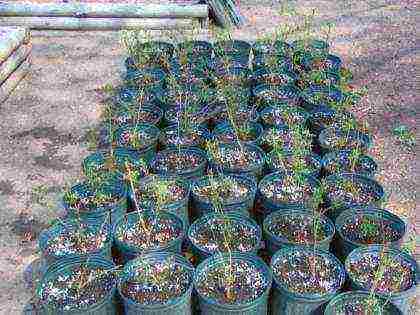
Landing in the ground. It is not easy to grow a birch from a branch, since the stalk is very capricious and requires attention. As soon as a root system is formed on it, it is necessary to plant it in the ground, but not in the garden, but use a pot. You should mix the soil with sand, make a small depression and plant in it, covering it with soil. The process must spend at least 5 months in a pot. During this time, the seedling will take over and grow stronger. To make it grow healthy, you need to water it 2-3 times a week and protect it from direct sunlight. When autumn comes, you can plant it in the ground.

Disembarkation in the garden. It is not difficult to grow a birch from a mature cuttings. It is necessary to find a suitable place in the garden for the future tree, dig a hole and plant a plant. It is very important to take good care of the root system: if it is damaged, the seedling will die. After planting, it is recommended to water the trees for 4 days. In 1-2 months, the stalk should take root and adapt to new conditions. It is quite easy to grow a birch from such a seedling, it will endure the winter cold and subsequently will delight you with its appearance.
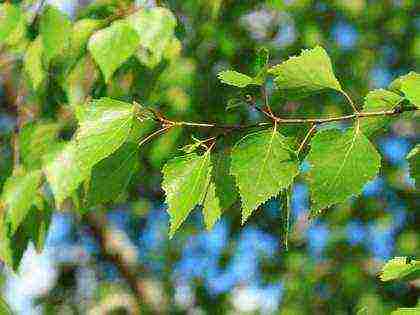
Watering, feeding. To grow birch, you need to water it regularly. This tree consumes quite a lot of water, so it should be watered in the summer at the rate of 1 bucket per square meter. m. crown. Do not forget about feeding. In the spring, it is recommended to add compost or humus to the soil. Birch and nitrogen fertilizers are well tolerated, but do not add too much of them. To grow a birch tree, you need to weed the ground around the tree. Weeds can strip it of moisture. Do not forget about loosening the soil, but you should not dig deep into the soil.
Tips
- It is impossible to grow birch without pest control. Gardeners recommend once a year to spray the crown of the tree and its trunk with fungicides and insecticides. Such prevention will allow you to forget about insects.
Did you like the article?
Not really
Content:
- Choosing a landing site
- How to get a birch sapling?
- Sapling from seed
- Cuttings sapling
- How to choose a seedling in the forest?
- Landing rules
Planting a birch tree is an excellent solution for arranging a personal plot or summer cottage. Thanks to its characteristic slimness and black and white bark, it looks great in the courtyard of the house. Caring for a birch tree does not require any special skills. The tree does not need feeding, but it needs to organize abundant watering. However, there are several more features of planting and caring for a tree, both in the personal plot and in the country. Consider how to plant a birch correctly and what needs to be done for the subsequent care of it.
Choosing a landing site
Birch is an unpretentious tree, but for its correct planting in the yard or at a summer cottage, a careful choice of the landing site is required. It should be borne in mind that the tree will grow in size every year. If all the necessary conditions for the productive growth of a birch are met, then it can reach a height of up to thirty meters, and the diameter of its trunk will be about 50 centimeters.
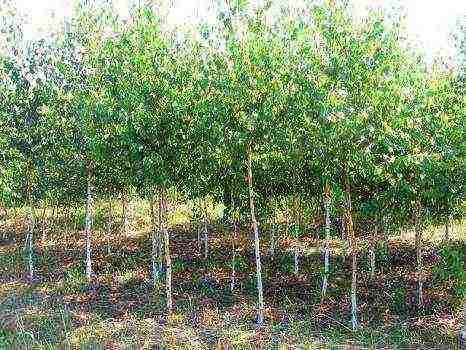
In this regard, you should not immediately plant several birches in close proximity to each other or place a tree in close proximity to buildings or communications.
To choose the right place for planting birch, you must follow several mandatory requirements:
- It is necessary to observe the required distance from the house and outbuildings equal to five meters. From fences - at least three.
- Consideration should be given to the location of all underground utilities in the courtyard of the house. Distance from sewerage, plumbing, drainage, etc. should be at least three meters. Ideally, about four to five.
- You should not plant birch next to tall trees.Depending on the height of the "neighbor", you need to retreat from him three to five meters.
- If you plan to create a small alley or hedge, then it is important to calculate how many seedlings are needed, given that each of them should be planted at a distance of at least 4 meters from each other.
- It should be borne in mind that birch does not get along well with fruitful trees.... As it grows, it makes the soil around it unsuitable for growing other trees and shrubs, as it absorbs a large amount of moisture from it. It is best to plant some kind of unpretentious lawn grass near it, which will complement the decor of the site.
- The birch should be planted on the north or east side of the house. In this case, the ideal balance of sunlight and shade will be achieved throughout the day.
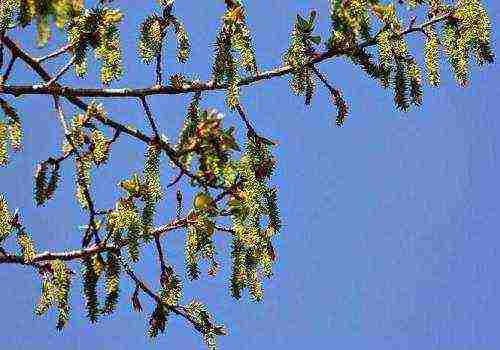
How to get a birch sapling?
In order to become the owner of a seedling, you can choose one of four options: grow from seeds or twigs, dig up a seedling in the forest, or buy it in a special nursery.
Of course, each of them has its own advantages and disadvantages. Buying a plant in the nursery, the future owner will receive a mature seedling, which will be properly prepared for transportation and further planting. It will only be necessary to deliver the plant to the planting site and plant the birch in the ground. In addition, special undersized species (shrub) can be selected in the nursery. It is best to purchase several birches at once so that they are of the same age.
For other methods, there are some features that should be studied in more detail..
Sapling from seed
Birch propagation occurs by seeds. In nature, this is done through natural processes. Birches grow in large groves, which take a huge amount of moisture from the soil. For this reason, tall weeds or large trees are often unable to coexist with birch trees. It is thanks to this that small seeds can germinate freely among their relatives. But the answer to the question of how to grow birch from seeds at home requires detailed consideration. This is a painstaking process. Growing birch in this way is only suitable for true connoisseurs of hand-made gardening.
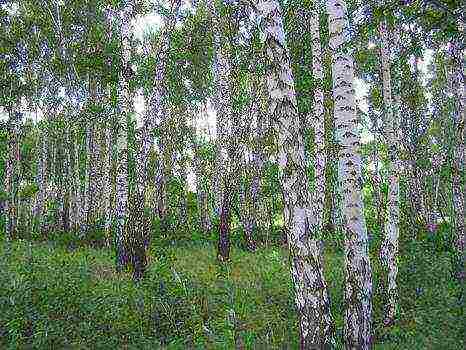
First you need to get the seeds. To do this, you should wait for them to ripen in the fall. After that, you need to remove as many branches from the plant as you need to prepare seeds. Next, you should tie them into a bunch and hang them in a dry place. There, the final ripening of the seeds will take place for a week. Then you need to shake out the seeds from the earrings and sift them from unnecessary litter.
Planting is carried out in the year of collection. It is best to drip in seeds either in autumn or early winter.
To prepare the planting site, it is necessary to dig up the ground to a depth of 25-35 centimeters and remove all weeds and large roots from there. In the same year, it should be treated with special antifungal agents so that microorganisms and mold, pathogenic for seeds, do not form on it. It is necessary to protect the soil in the area from weeds up to the planting of seeds, because in the future they will interfere with the development of a weak sprout. The land must be absolutely clean. This is especially true in the spring, when weed seeds transferred in the fall begin to germinate on it.
A sprouted birch tree is afraid not so much of competition for nutrients, as of significant shading.
The final preparation stage begins ten days before sowing. At this time, it is necessary to level the ground and make holes (depth - 5 cm, diameter - 10 cm) at a distance of 35-40 centimeters from each other. It is best to start sowing during calm evening hours.
Each hole must be fertilized with a two-millimeter layer of humus and covered with loose soft soil. Especially for these purposes, you can purchase it in the store or prepare it yourself.
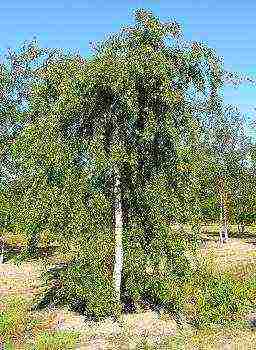
The spring stage is no less important.In the first weeks after germination, birch is very vulnerable. It is no larger than the head of a match. At this point, it will be correct to organize abundant watering with a spray bottle with such a frequency as to prevent the top of the soil from drying out. The roots of the plant at this stage are only about 10 centimeters deep. The organization of abundant and frequent watering is necessary until mid-August. In summer, seedlings will begin to grow actively only from mid-July, and by the end of the season they will reach a height of 20-30 centimeters.... The largest in the fall can be planted immediately in a permanent place. The rest must be transplanted into a nursery (a specially prepared and fertilized place for the further formation of seedlings). Seedlings begin to form in rows. Each seedling should be at least 10 centimeters apart from each other. By the fall of next year, when the height of each birch growing on the site reaches 50-80 centimeters, they can be safely planted in a permanent place.
Cuttings sapling
If the future owner needs a large seedling, then you can skip the part on how this family of trees reproduces using seeds. The reader will be more interested in information on how to grow a birch from a cuttings. This method is not very popular due to poor rooting. However, the process is fairly straightforward. You need to find an adult birch and find on it a young, already formed stalk 40-60 centimeters long. You need to carefully cut it and put it in a special mixture made from water and a root formation stimulator, and then place the future seedling in a room with a temperature of about 25 degrees.
After the cutting has taken root, it is planted in a large flower pot for rooting.... During this period, he needs to organize abundant and frequent watering (2-3 times a day), preventing the earth from drying out and applying fertilizers. After two to three weeks, the seedling takes root. It is carefully removed from the pot along with the soil in order to transplant the birch to a permanent place.
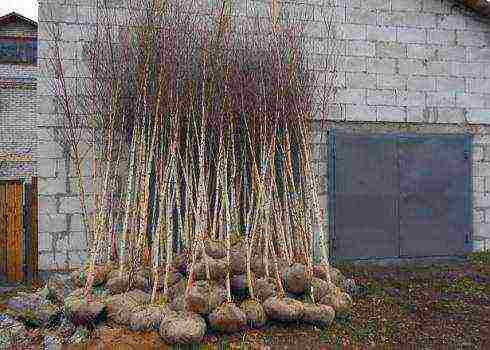
How to choose a seedling in the forest?
In this case, you need to go to the forest, or rather to a birch grove. It is best to hike a young birch in early spring, so that the leaves on it have not yet bloomed. You can take a seedling in the forest and in the fall. However, in this case, he may die without taking root after the transplant. Visually, you need to find a healthy birch with a height of 80 to 100 centimeters. It is important that there are no twisted or twisted branches on it, and that there are no traces of the disease on the bark.
If the birch was transported from the forest, then in this case it is best to add complex fertilizer to the hole.
To properly dig up a tree, you need to carefully dig around it. After that, on three sides, you need to go deeper into the ground with a shovel and remove the seedling from the ground. The roots do not need to be shaken off, otherwise they will dry out and the birch will die. The seedling must be placed in a bucket or bag. Then tread with soil. Then quickly transport to the place where the birch will be planted.
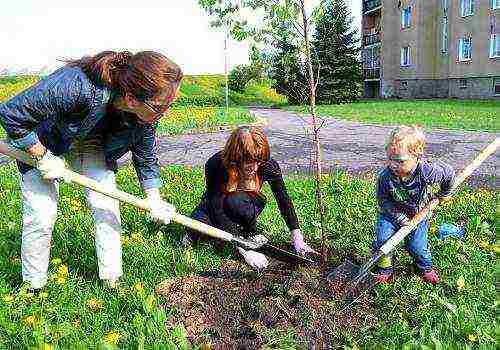
Landing rules
It should be noted that, in fact, there are no special recommendations on how to plant a birch at home, but there are several tips that will help you quickly and correctly cope with the task:
- A young tree is planted in already prepared soil. There should be no weeds on it. Planting is best done in early spring, when the air temperature still does not exceed 10 degrees.
- You need to dig a hole based on the size of the root system of each individual tree. Before planting, there is usually some soil on it, which should not be shaken off. A deep hole is not needed. Otherwise, the root of the seedling will be at a significant depth and in the first weeks of rooting, the plant will not be able to take root and will die from a lack of moisture. It is not necessary to clear the land for planting a seedling.The presence of weed roots in it is allowed, because a birch that has taken root will still prevent them from developing.
- It is best to put fertilizer in the hole before planting.... In it, the tree should be placed in a soil mixture, consisting in equal parts of: earth, sand, peat and humus.
- Insert the birch into the hole, sprinkle it with earth and tamp it lightly. After that, it is best to make a support for the young birch.
- After planting in the ground, the birch requires shading. It can be organized using any material available. The main thing is not to break the still fragile branches.
- Fertilization is necessary for several years after planting. To do this, dilute 2 kilograms of mullein and 20 grams of urea and nitrate in a bucket of water. It is better to do this in early spring - at the time of leaf formation.
- Pruning the tree as it grows is unnecessary. Only dry or broken branches should be trimmed.
Birch is one of the symbols of Russia, perhaps the most widespread tree in the middle zone of our country. Although gardeners are often in no hurry to start a birch in their area, since the roots consume a lot of moisture and nutrients from the soil, which does not have a very good effect on the “neighbors” of the birch. However, all these problems can be easily solved by organizing proper watering and feeding.


